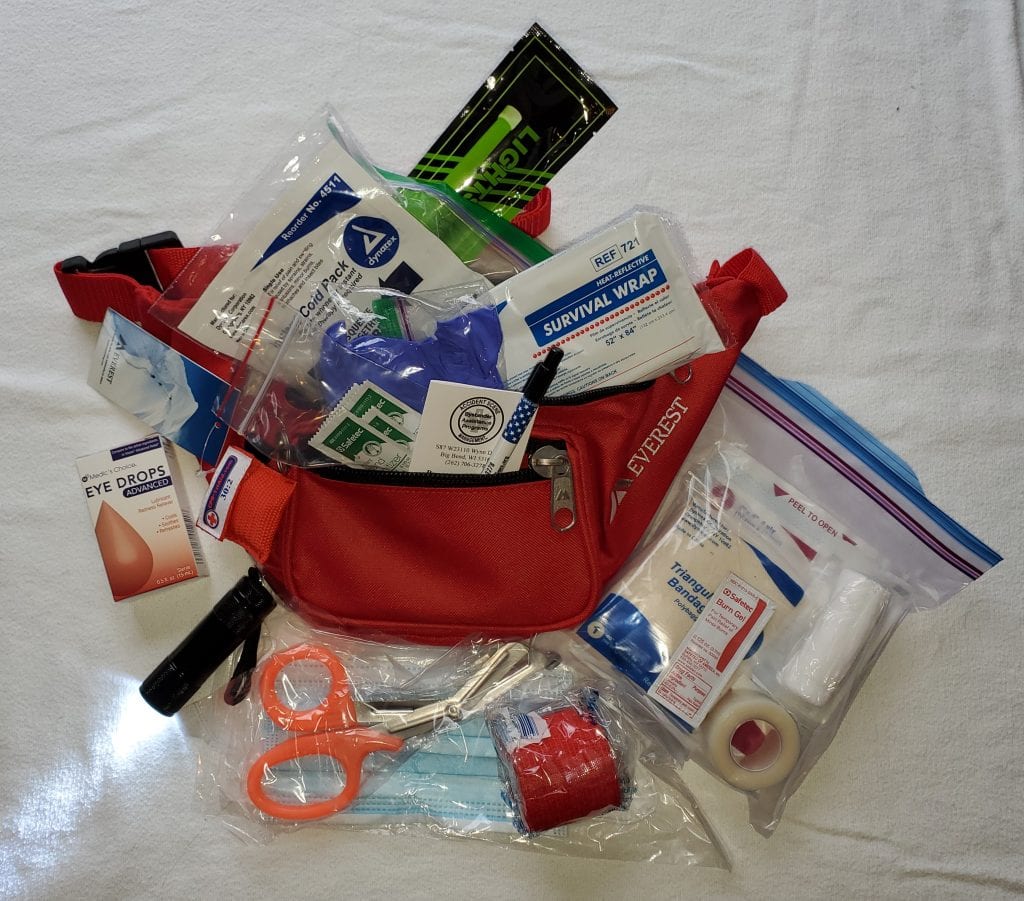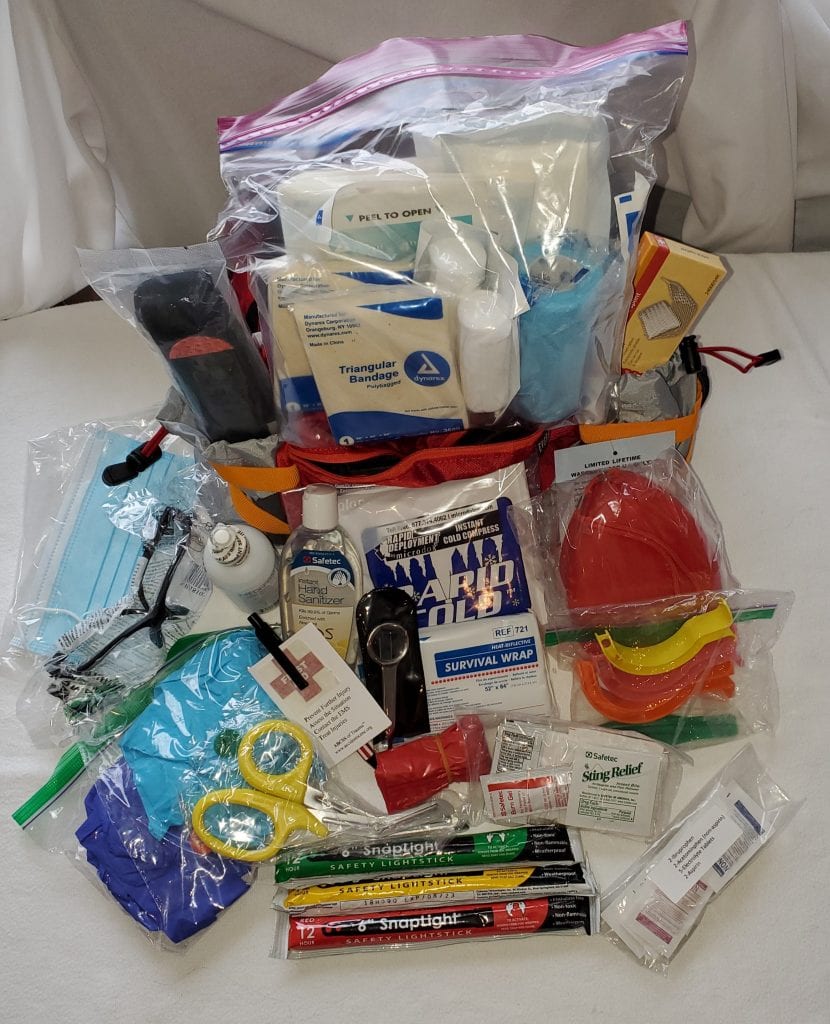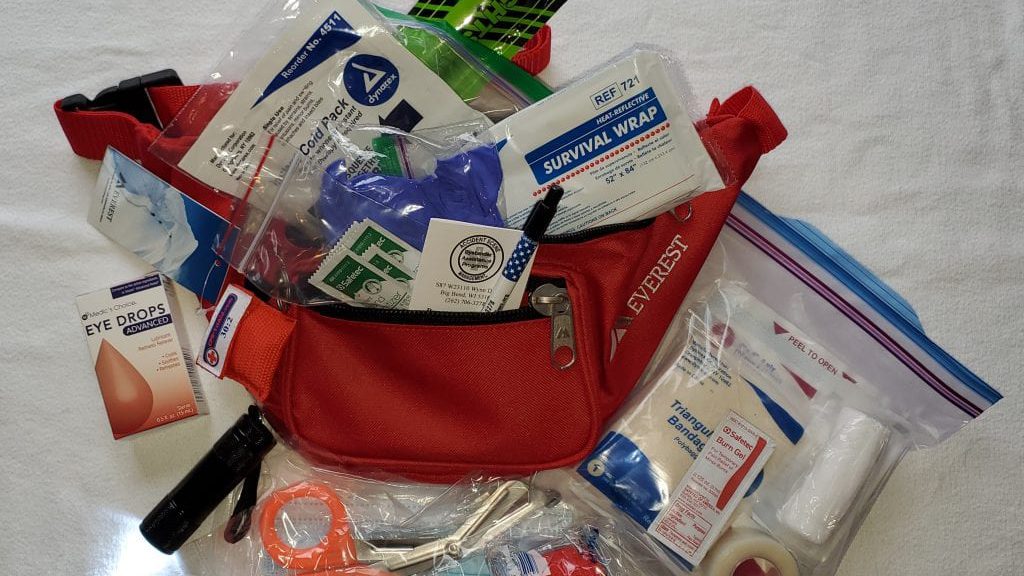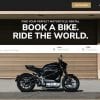“No matter what bike you buy, you’ll drop it at least once.” We’ve all heard the saying, and being honest (come on guys and girls!), we’ve all done it at least once. Parking lot practice, coming to a stop at a red light, getting a sudden gust of wind when you’re setting off, the bike and you have gone down at least once. Often, these drops are the source of some good-natured laughs, a little bit of embarrassment, and a lesson in humility learned.
Yet, not all drops happen at low or no speed. What happens when you come across, or witness, a drop when going 100 KPH? What if you are doing a long-distance tour and come across someone that has cut their hand trying to fix the battery lead under the hood of their car? Having first aid knowledge is definitely a plus, but having a ready-to-go first aid kit is the best kind of preparation for these scenarios.
First Aid Kit Limitations
Carrying Size
In a car, you can realistically carry a full aid kit, with everything and anything you could possibly need in an emergency or aid situation. On a motorcycle, unless you have a dedicated top box or pannier for a kit, there is a significant size limitation. Often, a motorcycle first aid kit is the kind you can fit into a pocket of your jacket, in your backpack, as a pack around your waist, or sometimes strapped down over your pillion seat.
It also means that you have to be prepared for the most common types of injuries that may require first aid. You cannot realistically carry a spinal board on a motorcycle, and while spinal concerns may be common in accidents, it’s often more important to stop bleeding and help the patient through shock setting in.
Injuries You Expect To Encounter
The most common types of injuries experienced by motorcyclists are not major traumatic injuries like broken bones and major cuts. In fact, the most common type of injury is either a burn, via sunburn, accidental contact with the exhaust pipe, et al, or an eye injury, from riding with the visor cracked open or fully open with sunglasses that are not road protection rated.
You can also expect scrapes and cuts from quite literally hitting the road, although the severity is often dictated by the road surface and the speed of travel. In the worst cases, you can expect to encounter fractures, breaks, and lacerations.
With this in mind, let us examine what really should be in your motorcycle first aid and/or trauma kit.
First Aid Kit Contents

- Image courtesy of Road Guardians. The Basic Kickstart Kit, including almost all of the items listed below in a small pack you can wear around your waist
Firstly, we at MotorBike Writer must give our heartfelt thanks to Road Guardians First Aid Training For Motorcyclists for their invaluable assistance in helping build out this list. We highly recommend checking to see if a similar first aid for motorcyclists course is available in your area.
Basics
The first thing in any first aid kit, no matter the size, is at least two pairs of nitrile gloves. Protecting yourself from bloodborne diseases, as well as having a somewhat sterile field of treatment, is priority one. If you cannot safely perform first aid, it may be an extremely tough call, but you have to look after yourself first.
On the subject of sterility, having a small squeeze bottle of hand sanitizer that carries an anti-microbial rating is key. Make sure it is at least 60% alcohol, and if possible, be waterless so it cleans quickly and doesn’t stick around on the hands.
The third most vital thing in your first aid kit is a set of trauma shears. You can find these at most medical supply stores, where they may also be labeled as paramedic shears. You want ones that are at least inches long. They are designed with a flat bottom to be slipped under clothing, leathers, and the like, to cut away said clothing or leathers to allow access to potential injury and trauma.
A first aid field guide, a small first aid book, or even a cheat sheet that is laminated to protect against the weather is always helpful. In the heat of the moment, while you may be remaining calm externally, your mind might be racing, and having a quick lookup can ensure that you apply first aid correctly.
Having a syringe of sterile saline is recommended, but not fully necessary, to wash out (irrigate) any deeper cuts or surface abrasions, getting rid of the dirt, and cleaning the wound for treatment
Heavy-duty ziploc or even freezer bags are extremely useful for putting biohazardous material such as used gauze, used gloves, et al in to keep them separate from sterile areas or as part of the post-aid cleanup.
A collapsible rescue breathing mask is important in today’s world, especially with the pandemic. These masks will cover the mouth and nose, and often will have a one-way flutter valve in them to allow your breath to pass through, but not allow any return breath to prevent contamination.
Cuts & Abrasions
Since abrasions and cuts may be encountered anywhere, the first thing to really take care of is having a variety of bandages. Along with an antibiotic ointment either in a small tube or single-dose tear packs, everything from some regular bandaids, at least four butterfly bandages/steri-strips/adhesive sutures, and four large 4×4 packaged, sterile gauze pads are the priority.
It is also recommended that you carry a few folded paper towels in a ziplock bag, as these can be used to wipe away blood or other fluids to get to the site of the bleeding. Once the cut or site of bleeding is identified, then using the gauze pads to put pressure on the cut is advised.
If there is room in your kit, a tourniquet is recommended as well, one made of a strong strap with some kind of handle to turn the tourniquet tight. This is to be used for the most serious of blood injuries such as an open amputation, and it’s always better to have one and never need it, than to need it and not have it. It’s better to prevent someone bleeding out and they lose a limb than for them to die. Harsh truth, but the truth nonetheless.
Burns & Insect Bites
Believe us, you’ve never pulled over and parked by the side of the road as fast as when a wasp gets in your helmet. Even then, you’re probably going to get stung a few times, so here are some items you should carry.
Most importantly, if there is room in your kit, an EpiPen is highly recommended, and it should be changed out when it is close to expiring. Many people who have major allergies or anaphylactic reactions will have an EpiPen on their person, but if you identify such a reaction, having an easily accessible EpiPen, instead of searching that person for theirs, can quite literally mean life and death.
Due to how commonly people get a sunburn, an accidental heat burn from touching a hot part of their bike, or even an insect sting, some burn gel and/or sting relief gel in your kit is one of those things you will use more often than not. A small tip, aloe vera-based gels, or those fortified with aloe vera extract, work extremely well here.
As well, having some instant cold packs designed for first aid kits will be immensely useful. These are the little folded packages that you squeeze one side to break open a vial inside, and due to the chemical reaction taking place, it gets very cold, very quickly. One of these applied to a minor burn or major sting will bring quick relief, as well as reducing the stress the patient is experiencing.
Breaks, Fractures, and Sprains
It is human nature to extend the hands in front of us when falling or flying through the air, so that the “least important” part of us, the arms, take the brunt of an impact, protecting the head and torso, the so-called “life box.” As part of this natural instinct, arm, wrist, and hand fractures are quite common non-life-threatening injuries, as are collarbone breaks.
In terms of first aid, having a few triangle bandages can be extremely helpful. These bandages can be used as slings, can be wadded up to be padding, can be rolled quickly to form bindings for splints, can be used to tighten gauze, can be used as tourniquets in extreme situations, and are generally just damned useful. While air splints are a bit too large to carry in a motorcycle first aid kit, if the patient’s motorcycle has suffered severe damage, a triangle bandage wadded up inside a front fairing, with two more bandages tying an arm down to that fairing means you have a makeshift split. Triangle bandages are literally the Swiss Army Knife of a first aid kit.
As breaks and fractures are the most common type of injury that can send someone into shock, having an emergency blanket or two in your kit is vital. These can be used as makeshift rain covers, are designed to reflect body heat back into a body with the shiny side, and can also be used as a treatment blanket if you need to sit someone down on the ground and prevent them losing body heat to cold or damp grass/mud/etc.
Useful Extras
It is highly recommended to carry a ziploc bag that is nicknamed “the small pharmacy.” In this bag, clearly identified, should be anti-diarrhea tablets, antihistamines, antacids, regular or extra-strength over-the-counter painkillers, and a few packs of water-soluble electrolytes you can mix in with water or take straight from the package. Not all first aid is direct and dealing with broken bones and cuts. On a long, multi-day motorcycle ride, diarrhea can dehydrate you very quickly, and having electrolytes to replace the ones lost is vital.
If you can squeeze it into your kit, having a couple of 2 inch wide rolls of gauze is another one of those “you never know” types of items. They can be used to wrap burns, hold gauze pads in place, help tie splints, and generally just be useful.
A few glowsticks are extremely useful, especially in multiple colors. These can be used for everything from emergency light to work by at night, to signaling traffic away from an accident scene. If you have multiple colors, having green, yellow, and red as those colors can help with triage, with green as OK, yellow as a concern, and red as emergency aid needed.
Especially in Australia, having a good pair or two of tweezers in your kit is important. Stings, bites, and nasty plants abound, so being able to pull plant spikes, spider mandibles, stingers, or even the odd splinter from your skin quickly is important.
Summary Checklist

- Image provided by Road Guardians. The Rebel Kit, which has everything you could possibly need in a first aid kit that will fit in a backpack or pannier/top box on your bike
While this may sound like a hell of a lot of stuff to fit into a small bag, you will be surprised at how many items can be folded flat, naturally lay flat, or can fit around each other in such a kit. In fact, all of these items will slide into a kit small enough to be slid down the outside of a camelback, or tucked into the front pocket of an adventure riding jacket.
The Checklist:
Essentials
- Two (2) pairs of Nitrile Gloves
- Anti-microbial, >=60% alcohol hand sanitizer
- Trauma shears
- First aid guide book/field guide/cheat sheet
- Syringe of sterile saline for irrigation (if possible)
- Collapsible rescue breathing mask (with one way valve if available)
- Regular bandaids
- Four (4) butterfly bandages (can substitute adhesive sutures or steri-strips)
- Four (4) sealed, sterile gauze pads, at least 4 inches square
- Paper towels folded flat in a ziploc bag (for wiping/fluid cleanup)
- Burn and/or sting relief gel (Aloe vera based or infused highly recommended)
- Instant cold packs (we recommend at least two or more, as space allows)
- Three (3) or more triangle bandages. The most useful multitool in your kit
- Two (2) emergency blankets if possible, one (1) if not
Really Nice To Have
- In-date and sealed EpiPen
- Tourniquet with handle and strong strap (if possible)
- Heavy-duty ziploc/freezer bags for biohazardous waste and post-aid cleanup
- The Small Pharmacy bag
- Antihistamines
- Antacids
- Anti-diarrhea tabs
- Painkillers
- Electrolyte powder packs
- Two (2) two-inch wide rolls of gauze
- Glowsticks, preferably of multiple colors
- Good tweezers
Source: MotorbikeWriter.com


